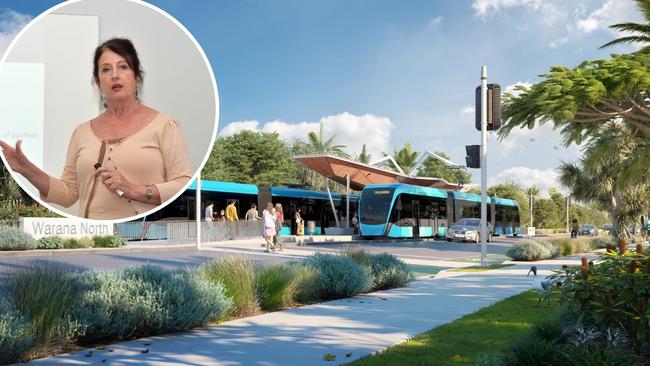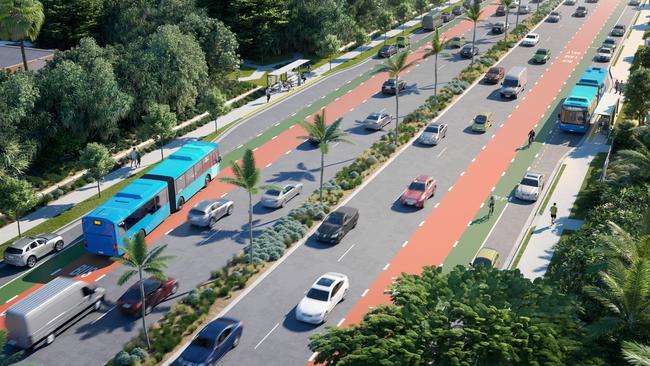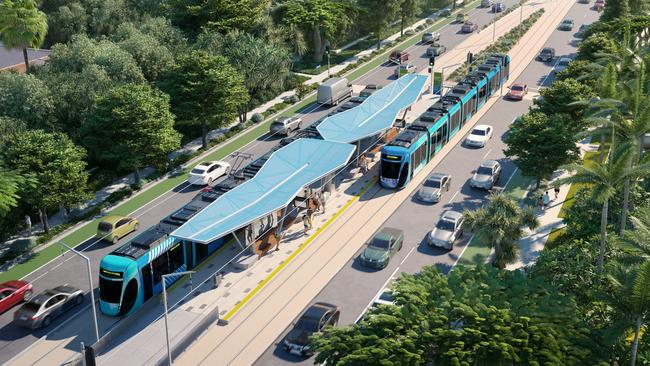Sunshine Coast mass transit documents over a decade show evolution of light rail plans
Reports compiled over more than a decade show the evolution of a controversial public transport proposal currently up for community comment.

Business
Don't miss out on the headlines from Business. Followed categories will be added to My News.
Reports compiled over more than a decade show the evolution of a controversial public transport proposal currently up for community comment.
Sunshine Coast Council's mass transit plans have been in the works for more than a decade with several iterations of the proposal published in a series of reports and documents that have led to this point - an eight-week public consultation period to help direct a final report for the council.
Pending consideration the final Options Analysis report could be sent to the state government which will be responsible for the detailed business case process dictating future funding and timelines of the project.
DON'T MISS OUT: Activate your bonus for big rewards
Light rail was floated as a transport solution in 2011, ahead of the publication of the 'A Line in the Sand' report in 2012.
Led by the Light Rail Taskforce made up of industry and community representatives and members, the report considered options like elevated light rail, monorail and a hybrid light rail to move future generations around.

The preferred staging, first from Maroochydore to Kawana then Kawana to Caloundra was outlined in the report.
That has changed slightly in the 2021 version of the project, with Kawana to Caloundra now third priority behind a CAMCOS link from Kawana to Beerwah.
The 2012 report placed greater emphasis on future connections further afield, namely to the University of the Sunshine Coast, Palmview, Caloundra South, Nambour and Noosa, than its successors.
The 2021 version has ditched the idea of going up, at least in a transport sense, with no mention of monorail or elevated light rail.
The preferred options have emerged as trackless tram, bus rapid transport, light rail or wireless light rail.
A hybrid light rail system was costed at $2.61 billion back in 2012.

The 2012 report outlined possible funding streams which included land uplift capture, public transport levy and advertising revenue.
The Line in the Sand report had a strong emphasis on the need for any mass transit system to be supported by a vastly improved bus network and a broader transport solution, whereas the draft options analysis report this week highlighted the shortcoming of CAMCOS along the proposed mass transit stretch.
The first stage was forecast to be finished in 2020, with a strong focus on land use planning to support light rail.
Light Rail Taskforce member Professor Mike Hefferan was quoted in the 2012 report highlighting the need for clarity on what was being proposed.

"I think the main point is to ensure the Sunshine Coast community really understands the implications of light rail - of course as a people mover but also as a fundamental urban design development tool," Prof Hefferan said.
The 2012 report repeatedly points to the development potential a light rail could unlock.
"The Taskforce did not start with a project to move people," the report states.
"It started with development of a new urban vision for a developing Queensland community.
"The Sunshine Coast Light Rail project aims to be a catalyst for defining change in the region.
"There is a strong relationship between land use and effective public transport.
"By developing new areas to be 'transit oriented', a virtuous cycle can be established; higher densities and better mixes of land uses support higher patrongage which allows higher frequencies of service.

"Higher frequencies of service in turn encourage more people to live near public transport and so the cycle continues."
The 2012 vision was for low-rise along the corridor with three-storey building heights and some 3-5 storey buildings where possible.
The Taskforce considered heavy rail and light rail not to be mutually exclusive and they should be "connected and complementary".
By 2051 it was forecast more than 80,000 passengers a day would use a new rapid transit system.
The ensuing strategic business case reiterated the staging and investment priorities as Maroochydore to Kawana followed by Kawana to Beerwah (CAMCOS) and Kawana to Caloundra (mass transit).
It noted a delivery due date for the first stage of the project as 2026.
The draft report released this week recommended stage one be operational by 2027, with construction starting in 2024.
A PricewaterhouseCoopers interim findings report released in January 2020 also backed up the staging priorities and focused on the forecast cost of future congestion.
It found a light rail intervention land use scenario would deliver 19,597 more people into the urban corridor.

It also found that fixed infrastructure and a high frequency transport solution would provide "greater certainty for residential, retail and commercial property investment".
Trackless tram technology was viewed as needing further development in the PwC report and had to prove some degree of commercial service to be considered a solution in its own right.
It ranked the options as light rail at number one, bus rapid transit second and quality bus corridors third.
Sunshine Coast Business Council chairwoman and one of the original members of the 2012 Light Rail Taskforce, Sandy Zubrinich, said the organisation had been looking forward to the draft options analysis report's release.
She said the group would be going over the recently published document closely and contributing feedback.
Ms Zubrinich said there were "some very key issues" raised in the report which were also relevant to the new planning scheme and the business council was looking forward to taking part in the industry consultation as part of the mass transit feedback process.
"This and the planning scheme are really major milestones in the direction of transport and our future development of the region," she said.
"The coastal strip is near and dear to many in the community and so is the need for sustainable development and maintaining lifestyle and these issues also need to be very much considered in terms of the future and this is the time to get our integrated transport strategy right."
Originally published as Sunshine Coast mass transit documents over a decade show evolution of light rail plans


